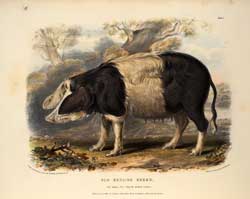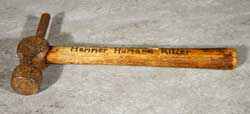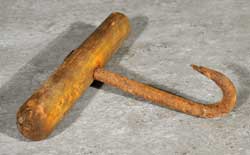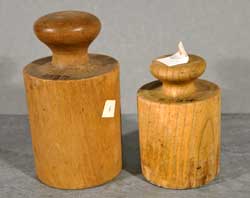Pigs

Illustration of an Old English breed sow, from David Low, The breeds of the domestic animals of the British Islands (London: Longman, Orme, Brown, Green, and Longmans, 1842)
Special Collection Oversize SF105.25.G7.L6
"The pig was the mainstay of the family in practically every home. No house could afford to be without a pig, they were a most essential portion of the diet."
Edith Hickson, Life at Laxton c1880-1903 : the childhood memories of Edith Hickson (Nottingham: Dept. of Adult Education, The University of Nottingham, c.1983) East Midlands Collection Pamphlet Not 254.D28 HIC. p.33
Pigs were useful creatures in the days before refrigerators and freezers because the meat could be preserved, either by curing it (to make ham or bacon) or by cooking it to make pies and sausages.
Recipes for ham pie and sausages, from the recipe book of Henrietta Harley, Countess of Oxford, 1743. From Portland Literary Collection Pw V 123/31 and Pw V 123/92
Many of the smallholders in Laxton kept pigs in their backyards or in the crofts behind their houses. The pigs were killed at intervals throughout the autumn and winter. Fresh pork was eaten between September and April. They were put into a tub of scalding water to loosen the hairs and bristles, which were removed with scrapers.
Pork pies were made with the best bits of meat. Meat from the pig’s head was made into brawn, which was set like jelly into a mould. According to Edith Hickson, “other bits and pieces, the liver, kidneys, sweetbreads and all trimmings, become fries. And always a fry or two are given away to friends and neighbours – who will return the compliment”.
The exhibits in this case were collected by the late Reg Rose of Laxton and lent for the exhibition by Stuart Rose.

‘Humane’ hammer for killing pigs

Implement for removing pig claws

Wooden-handled scraper for removing pig bristles

Wooden pork pie moulds
Moree: Studying Laxton
Laxton: Farming in an Open Field Village home